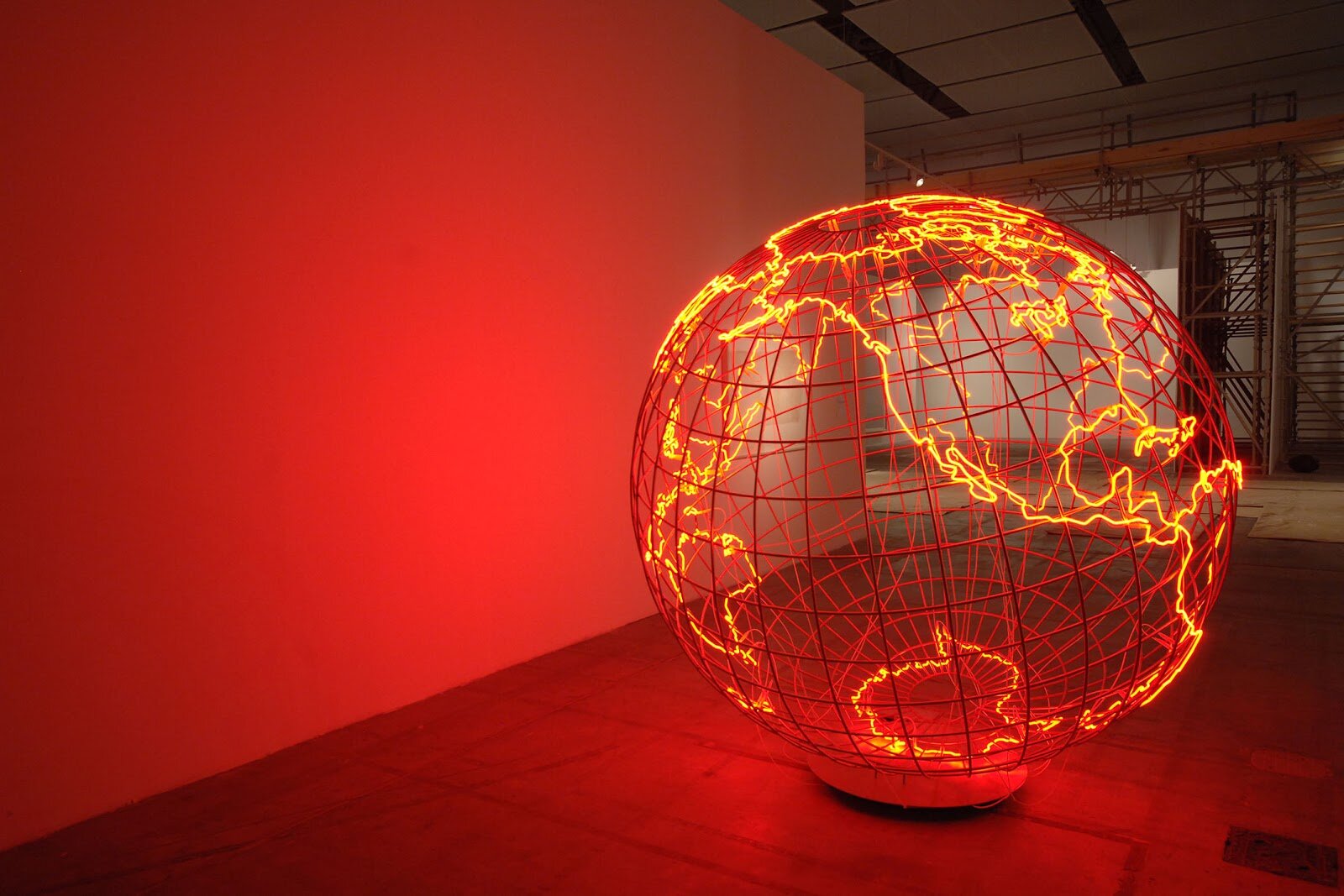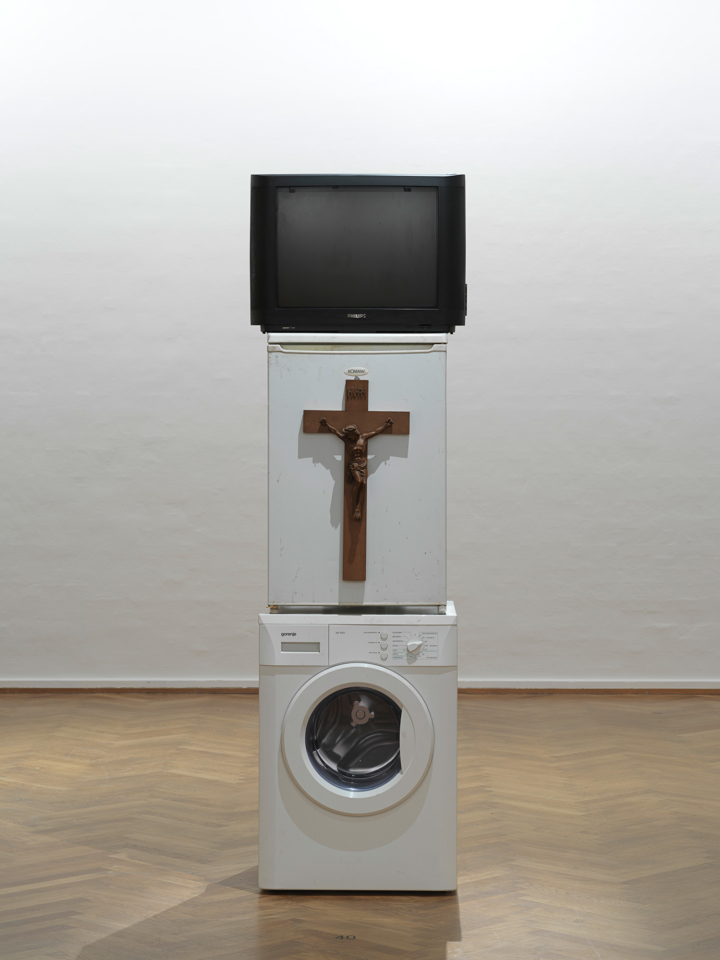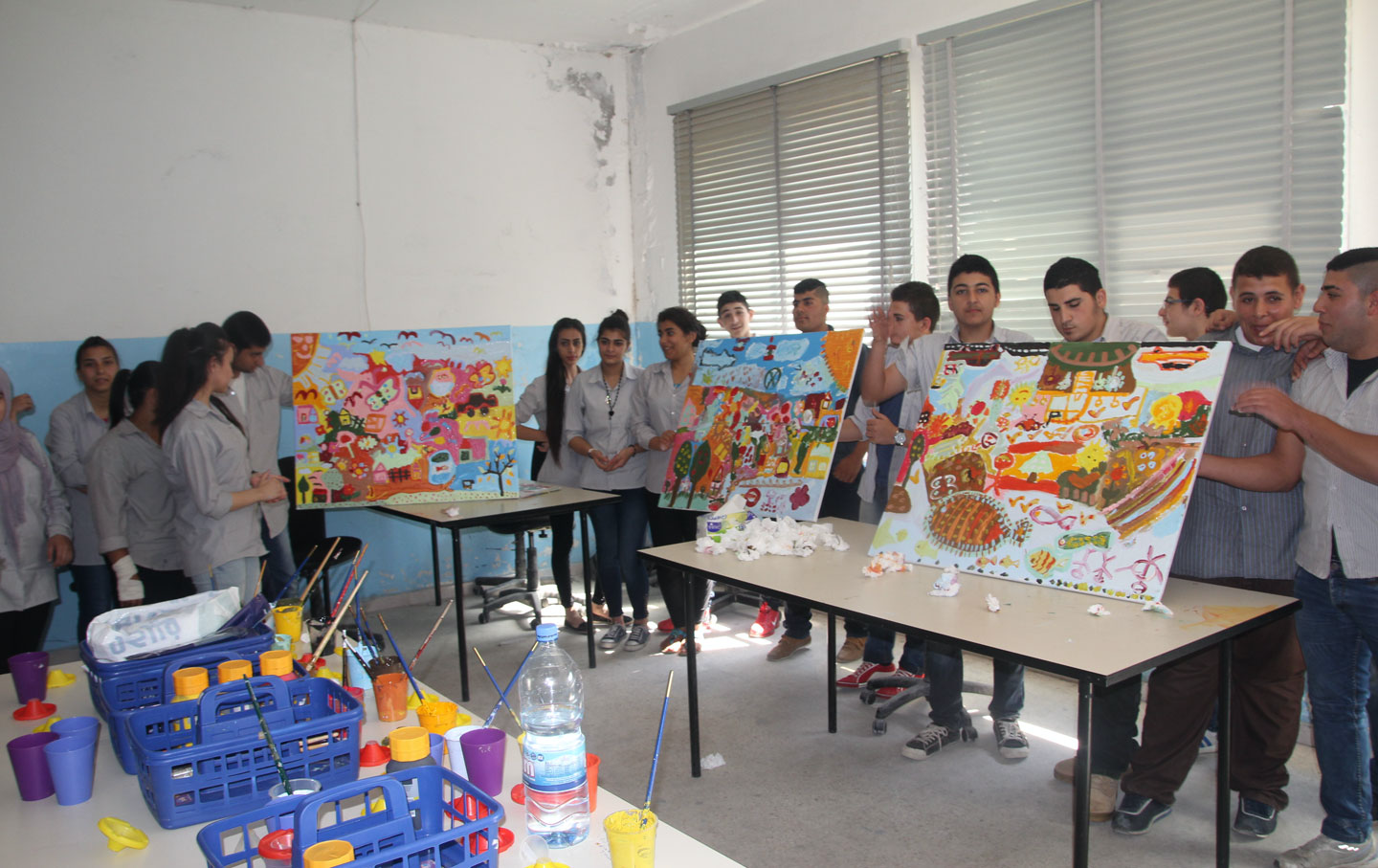- The Role of Art in the Refugee Crisis -
There are few mediums more expressive and universal than art. As a newly minted Art History major, my experiences with art historical classes, resources, and media have helped me realize that the study of art is really just the study of people. The study of art in and of itself is fruitless; to learn about art is to learn about people, their cultures, and their stories. And that is why I think it is of critical importance to interact with art created by refugees. Studying the pieces of refugee artists and supporting their work not only spreads the word about the refugee crisis and its impacts; it humanizes and individualizes the crisis in a way that few other forms of media are able to. In this post, I’ll be sharing the works of some contemporary refugee artists as well as discussing the role of art in therapy and recovery in refugee communities.
Mona Hatoum
Mona Hatoum is a Lebanese-Palestinian multimedia artist living and working in London. She was born in 1952 in Lebanon to Palestinian parents, but the breakout of the Lebanese Civil War in 1975 forced her family to flee to the United Kingdom, where Hatoum studied at the Byam Shaw School of Art and the Slade School of Fine Art. Her work focuses on political conflict, international inequity, and the struggle between insider and outsider.
For example, her installation piece Hot Spot (2006) consists of a human-scale metallic globe reminiscent of a cage. She uses neon lights to create the contours of borders, glowing bright red and contributing to a dangerous and urgent tone. In her artist statement, Hatoum describes her influence as a “world continually caught up in conflict and unrest,” and by illuminating the entire globe, the piece broadens the scale of the refugee conflict to a universal one. The refugee crisis does not solely affect the countries of origin of displaced peoples, it is a responsibility of the world to protect and safeguard those fleeing violence and persecution.
Mona Hatoum, “Hot Spot”, 2006
Dahn Vō
Dahn Vō is a Vietnamese-born conceptual artist currently based in Berlin and Mexico City. He was born in Vietnam in 1975, but his family fled Vietnam in 1979 after the fall of Saigon and resettled in Denmark. Vō attended the Royal Danish Academy of Fine Arts in Copenhagen and the Städelschule in Frankfurt and his work often addresses the issues of identity, belonging, otherness, etc. He describes his work as reinterpreting macroscopic political and cultural turmoil on an individual scale, what he calls “the tiny diasporas of a person’s life.”
Dahn Vō, “Oma Totem”, 2009
In his sculpture Oma Totem (2009), exhibited at the Guggenheim Museum in 2018, he explores the themes of migration and resettlement. It is a three-tiered piece composed of items given to his grandmother when she arrived in Germany after fleeing Vietnam (Oma in German means grandmother). Viewers see a washing machine, mini fridge, and television stacked atop one another, with a crucifix bolted onto the front of the fridge, a sign of the Catholic relief organization that donated the items. Vō describes the work as indicative of “the projection for what a society thinks that foreigners need,” and exploring themes of capitalism, religion, and post-colonialism. The work is now installed in a Copenhagen cemetery, where it serves as his grandmother’s gravestone.
Parmis Vard
Parmis Vard is an Iranian portraitist and painter based in Vienna. She fled Tehran in 2015 for reasons she doesn’t disclose in interviews, but frequently discusses the impact of her time in Iran on her both as an artist and as a person. Since resettling in Vienna, she has joined RESTART, a Berlin-based art collective giving a voice - and marketplace - to refugee artists. In 2017, she exhibited a collection of paintings in the Viennese Museumsquartier.
One of Vard’s pieces included in that exhibition was Blue (2017). Speaking about the painting and its inspiration in an interview with Migrant Offshore Aid Station (a previous GRMR fundraising partner organization), Vard speaks of the themes of repression, emotional turmoil, and the human search for peace that is especially relevant in regards to the refugee crisis.
“Once I saw a photo that reminded me of myself, so I just thought I would paint a face like my own, and for me blue is the colour of peace and calm. Darker blue shows inner turmoil; my dreams, my soul are blue. And [in this piece] I just want to say to another person ‘just give me peace instead’. I think this painting represents me and all of the people who are looking for peace, and with this painting I wanted to tell the world ‘listen to the silence of the human: don’t become this colour blue that is darkness.’”
Parmis Vard, “Blue”, 2017
Amir Nizar Zuabi
Amir Nizar Zuabi is a Palestinian-born playwright and director working in New York. His work and his preeminence is quite groundbreaking in the theater community; in an article focusing on Zuabi’s play Grey Rock, the New York Times details the historical theatrical phenomenon that “plays by Palestinian companies or on Palestinian themes are [rare] and often a source of controversy.”
In his play Grey Rock (2018), Zuabi introduces quite a fantastical tale: a Palestinian man who decides to build a rocket to the moon in his shed. All five of the main characters are played by Palestinian actors who are in the United States with work visas, a decision that Zuabi made to draw attention to the growing Palestinian theater scene. And while the play isn’t overtly political in its themes, it “doesn’t ignore the realities of occupation” of Palestinian land, touching on checkpoints, visas, military violence, etc. However, these themes are presented as secondary to the main narrative, of which Zuabi says “They’re present in the play like they’re present in our lives. We don’t live these political headlines. We have boring, normal lives.”
More recently, Zuabi is working as the artistic director of a collaboration between Good Chance, a British production company responsible for the acclaimed depiction of refugee life in Calais, France, and War Horse, a puppetry production company, to organize a monumental performance art piece drawing attention to the refugee crisis. An almost-12-feet-tall puppet of a Syrian refugee girl named Amal will “walk” almost 5,000 miles from the Syrian border to the United Kingdom. Of the project, Zuabi hopes to “reignite the conversation about the refugee crisis” but also to recenter that conversation: as Zuabi says, “refugees need food and blankets, but they also need dignity and a voice.”
Amir Nizar Zuabi
But more than providing a global platform for refugees to express themselves, art can also play a much more personal and community-based role. Through several initiatives and programs, art is used as a tool to uplift and a vessel for expression for many refugee communities.
The Syrian Refugee Art Initiative
Working in Syrian refugee camps in Jordan, the Syrian Refugee Art Initiative led by Joel Artista and the organization Artolution facilitates discussion and artistic creation. Artista says that their partnership with artists and educators in the Za’atari and Azraq refugee camps have catalyzed discussions about homesickness and missing Syria, hopes and aspirations for their futures, and the refugee crisis on a global and individual scale. And in terms of artistic production, they have overseen the creation of many collaborative murals and large-scale artworks. Since they began in 2013, the initiative has formed partnerships with organizations such as the International Rescue Committee, UNICEF, and the UNHCR.
Lebanon, Anita Toutikian
Lebanon houses more than 1.3 million Syrian refugees, and that has taken a significant toll on many programs, including its educational infrastructure. A recent UN report found that 95,000 Syrian refugee children show signs of trauma that diminish their learning abilities, estimating that 20% of Syrian refugee children in Lebanon drop out of school. Anita Toutikian, a clinical psychologist and artist, has been working with various groups of Syrian refugee children to provide psychosocial support through art. She says that they “are offering them the opportunity to express themselves freely, without judgment, without evaluation of their work.” For example, at the Barja Technical School in northern Lebanon, Toutikian does periodic work with a group of 22 Syrian refugee students, both individually and collectively, to paint and express themselves.
Exile Voices
This artistic project, created by acclaimed photojournalist Reza, works in the Kawergosk Refugee Camp, a Syrian refugee camp in Iraqi Kurdistan. In 2013, Reza traveled to the camp and established a photography and photojournalism workshop for children ages eleven through fifteen. Since then, Reza and Mohammed Qaddri, a refugee living in the community, have been training and working with the twenty young refugees to capture their lives and share their voices. It has had a profound impact on the children; for example, Maya Rostam says that “I want to learn photography because I believe that with it, everyone can see what I feel and how we live.” To view some of the photographs taken by the children, please visit https://maptia.com/reza/stories/exile-voices.
When we’re looking at the refugee crisis and the impact it has had on so many communities, obviously it is important to look at facts and figures to understand the scope of the crisis and the urgency of remedial efforts. However, it’s also important not to reduce these communities to just numbers. The sociopolitical roots of the refugee crisis have more than just a statistical impact: they have individual impacts that we must never forget. And art always reminds us of those impacts. Through creative expression, refugee artists can materialize their individual experiences, helping us to understand their stories and the human impacts of the crisis we are combatting as members of GRMR.












